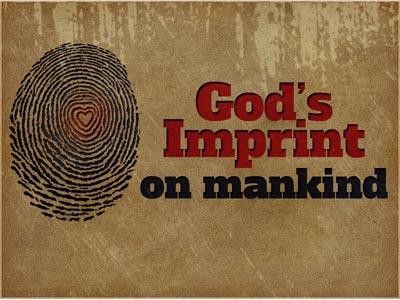-
All Things Good Series
Contributed by Chris Appleby on Nov 28, 2017 (message contributor)
Summary: To be human means to be made in God’s image, to reflect his character, his goodness, his creativity, his love. It means to relate with others and with God at a personal level. It means to bear the responsibility for his creation, for tending it and caring
What does it mean to be human? Is there any reason for thinking that human life might be more valuable than, say, that of dolphins or whales? Why are we here? How did we get here? Where did we come from? These are the sorts of questions that scientists and philosophers have been arguing about for hundreds of years. They’re the sorts of questions that are raised by the intelligent design lobby that’s been doing the rounds in America and here of late. But too often the answers that are given are simplistic ones. The Biblical literalists will tell you that God took a handful of the dust of the ground and suddenly humans were created. Just read Gen 2:7. That’s very clear, isn’t it?
On the other hand scientists claim that humanity evolved, along with the rest of the animal world, over millions of years; that the universe is billions of years old. So which is right? It sounds like it has to be one or the other when you break it down into those sorts of terms. Either we were formed from dust, all at once (and science is wrong) or else we evolved over millennia and the Bible is wrong. Which is it? Well, let me suggest that the trouble with a simplistic approach to such a complex subject is that it’s always going to lead us astray.
In fact the Bible doesn’t set out to give us a scientific theory about the origins of the world, or even of humanity. Not that that means it’s not true. You can tell the truth about the world without having to explain every detail.
Genesis begins with the words: "In the beginning when God created the heavens and the earth, 2the earth was a formless void and darkness covered the face of the deep, while a wind from God swept over the face of the waters." From the outset you see, we’re brought into the realm of time and space. These events had a when and a where. There’s no doubt that the writer saw this as history, just as much as if I were to tell you what I did on my last holiday.
Still, as I said, that doesn’t mean that what we read here is a scientific account of the origins of the world in the way we 21st century people might think about it. No, what we have here is the account of where we came from, told by a people who had none of the advantages of modern science, but who nevertheless were able to grasp truth as it was revealed to them. So the distinction we need to make is that this is true truth, even if it isn’t exhaustive truth.
You might see a similar sort of difference if you read a description of Federation square in an architectural journal compared with, say, Vogue, or Gourmet Traveller. Each would give true facts and impressions, but they’d each be quite different.
So it’s important to understand what we’re reading here. Genesis 1 is a highly structured piece of writing that sets out to teach us not the how of creation but rather the who and to some extent the why of creation.
The account begins with the world a formless void. Interestingly that fits with the most commonly held theory about how the universe came into being doesn’t it? After the big bang, it’s thought, the earth was a ball of energy and matter that took some time to settle into it’s present form. So a formless void isn’t a bad description is it?
But then it begins to diverge from the scientific theories. That’s because it isn’t so much interested in the science of creation as in the reason for and the result of creation.
If you look at the passage you’ll see that the word ’created’ is used at 3 points in the story. Its used in v1, in v21 and then in v27 where it appears three times. At each point there’s a critical movement in the creation story.
In v.1 God creates the heavens and the earth out of nothing. In v21 he creates conscious life and in v27, the climax and pinnacle of creation, he creates humanity in his own image.
Now let me ask you, what do you think it is that characterises each of these shifts in the creation story? Clearly there’s an advance in each case, but it doesn’t seem to be any more than the advance when the light appears or the sun moon and stars are set in their place or the dry land appears and trees and plants begin to grow. So what’s the advance that God wants us to notice in each case?
Well let me suggest that it’s this: that at each point God introduces a new level of differentiation within his creation; of separation between what was there before and what he’s now created. First he brings the heavens and the earth into being, creating the world out of nothing - maybe even via a big bang! And as the passage progresses we see being introduced a growing level of complexity, in most cases introduced by the word "let". "Let there be light"; "Let there be a dome in the midst of the waters"; "Let the waters under the sky be gathered together into one place, and let the dry land appear." And so forth.

 Sermon Central
Sermon Central



